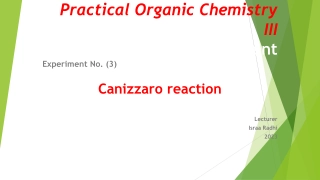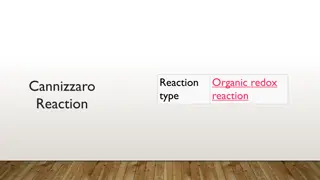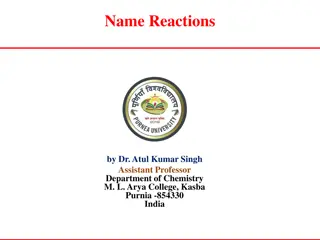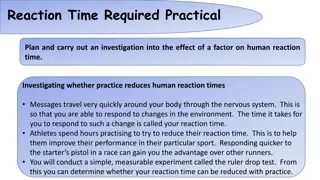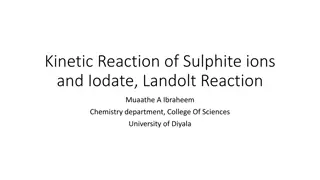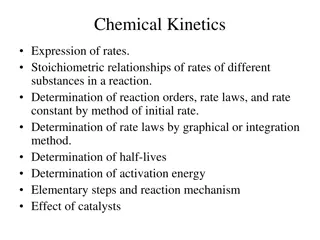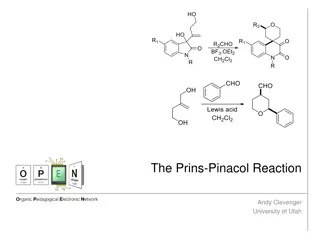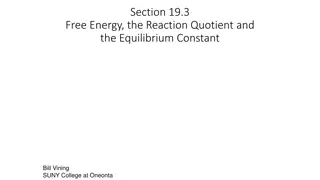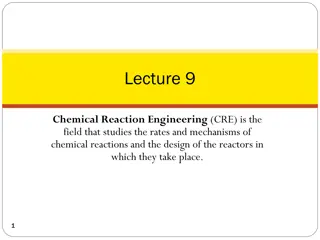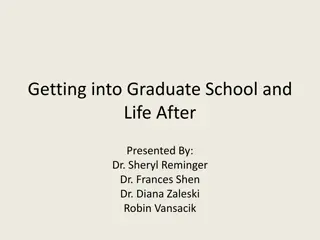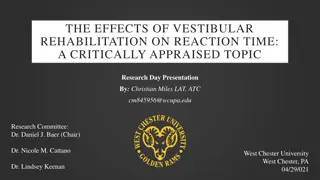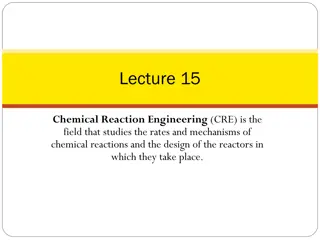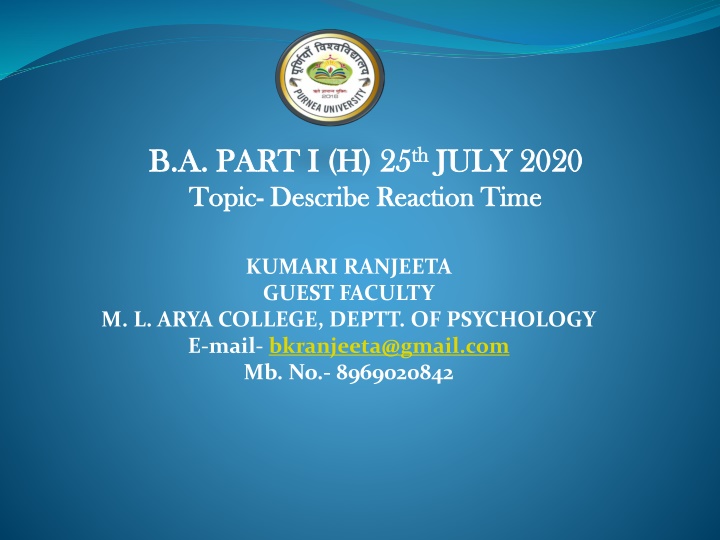
Reaction Time in Psychology
Reaction time is a crucial measure of response speed to stimuli, influenced by various factors like perception, processing, and motor agility. Learn how cognitive psychology uses reaction time to assess information processing in individuals.
Download Presentation

Please find below an Image/Link to download the presentation.
The content on the website is provided AS IS for your information and personal use only. It may not be sold, licensed, or shared on other websites without obtaining consent from the author. If you encounter any issues during the download, it is possible that the publisher has removed the file from their server.
You are allowed to download the files provided on this website for personal or commercial use, subject to the condition that they are used lawfully. All files are the property of their respective owners.
The content on the website is provided AS IS for your information and personal use only. It may not be sold, licensed, or shared on other websites without obtaining consent from the author.
E N D
Presentation Transcript
B.A. PART I (H) 25 B.A. PART I (H) 25th th JULY 2020 Topic Topic- - Describe Reaction Time Describe Reaction Time JULY 2020 KUMARI RANJEETA GUEST FACULTY M. L. ARYA COLLEGE, DEPTT. OF PSYCHOLOGY E-mail- bkranjeeta@gmail.com Mb. No.- 8969020842
B.A. PART I (H) PRACTICLE (DESCRIBE REACTION TIME) DESCRIBE REACTION TIME Reaction time is a measure of how quickly an organism can respond to a particular stimulus. Many factors have been shown to affect reaction times, including age, gender, physical fitness, fatigue, distraction, alcohol, personality type, and whether the stimulus is auditory or visual. In cognitive psychology, reaction time (RT) is used to measure the amount of time that it takes an individual to process information (Luce). It is the duration of the interval between presentation of a stimulus (e.g., a word on a computer monitor) and the participant's response to the stimulus.
B.A. PART I (H) PRACTICLE (DESCRIBE REACTION TIME) Reaction time is the amount of time that elapses between the presentation of a sensory stimulus and a behavioral response. Or, in other words, how fast can a person execute a mental operation needed by the current task. Reaction time or response time refers to the amount of time that takes places between when we perceive something to when we respond to it. It is the ability to detect, process, and respond to a stimulus. The average reaction time for humans is 0.25 seconds to a visual stimulus, 0.17 for an audio stimulus, and 0.15 seconds for a touch stimulus.
B.A. PART I (H) PRACTICLE (DESCRIBE REACTION TIME) Reaction time depends on various factors: Perception: Seeing, hearing, or feeling a stimulus with certainty is essential to having good reaction time. When the starter shoots the gun at the beginning of a race, the sound is received by the athlete's ears (they perceive the stimulus). Processing: In order to have good reaction time, it's necessary to be focused and understand the information well. Following the previous example, the runners, after hearing the gun, will be able to distinguish the sound from other background noise and know that it is time to start running (process the stimulus).
B.A. PART I (H) PRACTICLE (DESCRIBE REACTION TIME) Response: Motor agility is necessary in order to be able to act and have good response time. When the runners perceived and correctly processes the signal, they started moving their legs (respond to the stimulus). If any part of these processes is altered, reaction time will be affected as a consequence. In other words, if one of the athletes had poor reaction time, they would have a disadvantage against the other runners. Reaction time necessarily includes a motor component, unlike processing speed. This is why having good reaction time is associated with having good reflexes.
B.A. PART I (H) PRACTICLE (DESCRIBE REACTION TIME) Reaction time is importantwhen driving, when playing sports, in emergency situations, and in many day-to-day activities. Reaction timedepends on nerve connections and signal pathways. Reaction time is the measurement of how long it takes for brain and nerves to react to a stimulus. Reaction time is the amount of time it takes to respond to a stimulus. An example of reaction time is when a bug stings within 1 second of being approached.

